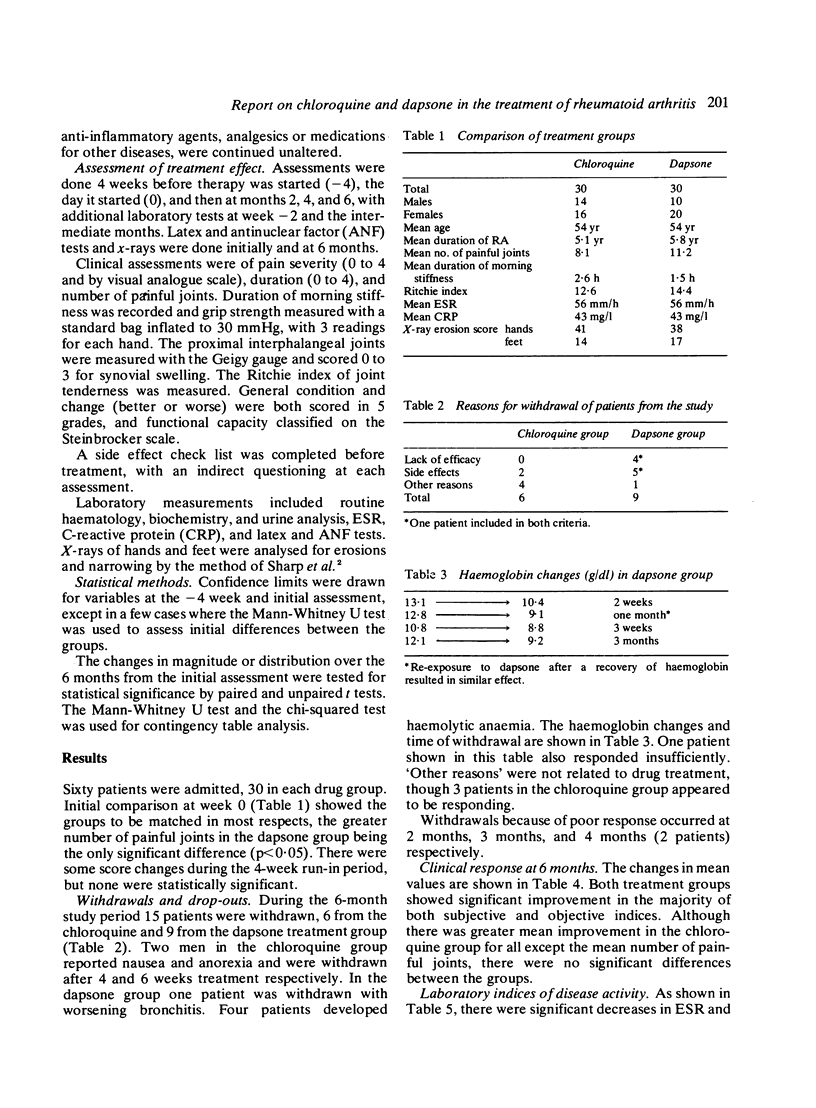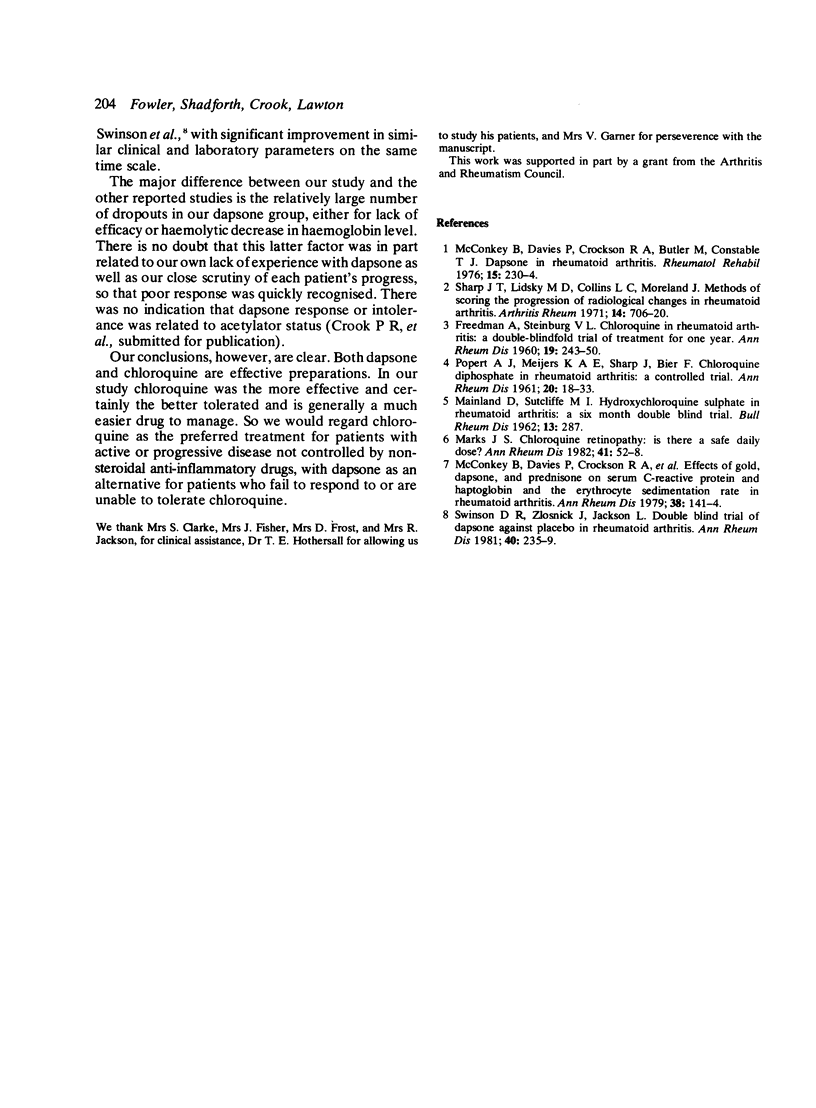Abstract
A controlled study compared 6 months' treatment of 60 patients with rheumatoid arthritis (RA). Half were randomly allocated to treatment with chloroquine 250 mg daily, the other half dapsone 100 mg daily (50 mg/day for the first 7 days) following a one-month run-in assessment period. All patients had active or progressing disease. Both treatment groups showed significant improvement in morning stiffness, number of painful joints, pain scores, Ritchie index, and proximal interphalangeal joint size, and the chloroquine group alone in grip strength. Laboratory tests showed significant decreases in erythrocyte sedimentation rate, C-reactive protein, and total serum protein levels, with significant increase in serum albumin in the dapsone group, where there was a significant mean drop in haemoglobin (less than 1 g/dl) and a rise in serum bilirubin, associated with its haemolytic effect. X-ray erosion scores were not significantly affected. The clinical and laboratory responses became evident by the time of the 2-month assessment. Criteria for clinical and laboratory improvement were defined, according to which there were 21/26 improvers in the chloroquine group and 12/29 in the dapsone group. It is concluded that although both are effective preparations, chloroquine showed a significantly higher improvement rate and was certainly better tolerated. It is the preferred treatment for patients with active or progressive disease not controlled by nonsteroidal anti-inflammatory drugs, with dapsone as an alternative for patients who fail to respond to or cannot tolerate chloroquine.
Full text
PDF




Selected References
These references are in PubMed. This may not be the complete list of references from this article.
- FREEDMAN A., STEINBERG V. L. Chloroquine in rheumatoid arthritis; a double blindfold trial of treatment for one year. Ann Rheum Dis. 1960 Sep;19:243–250. doi: 10.1136/ard.19.3.243. [DOI] [PMC free article] [PubMed] [Google Scholar]
- Marks J. S. Chloroquine retinopathy: is there a safe daily dose? Ann Rheum Dis. 1982 Feb;41(1):52–58. doi: 10.1136/ard.41.1.52. [DOI] [PMC free article] [PubMed] [Google Scholar]
- McConkey B., Davies P., Crockson R. A., Crockson A. P., Butler M., Constable T. J., Amos R. S. Effects of gold, dapsone, and prednisone on serum C-reactive protein and haptoglobin and the erythrocyte sedimentation rate in rheumatoid arthritis. Ann Rheum Dis. 1979 Apr;38(2):141–144. doi: 10.1136/ard.38.2.141. [DOI] [PMC free article] [PubMed] [Google Scholar]
- McConkey B., Davies P., Crockson R. A., Crockson A. P., Butler M., Constable T. J. Dapsone in rheumatoid arthritis. Rheumatol Rehabil. 1976 Aug;15(3):230–234. doi: 10.1093/rheumatology/15.3.230. [DOI] [PubMed] [Google Scholar]
- POPERT A. J., MEIJERS K. A., SHARP J., BIER F. Chloroquine diphosphate in rheumatoid arthritis. A controlled trial. Ann Rheum Dis. 1961 Mar;20:18–35. doi: 10.1136/ard.20.1.18. [DOI] [PMC free article] [PubMed] [Google Scholar]
- Sharp J. T., Lidsky M. D., Collins L. C., Moreland J. Methods of scoring the progression of radiologic changes in rheumatoid arthritis. Correlation of radiologic, clinical and laboratory abnormalities. Arthritis Rheum. 1971 Nov-Dec;14(6):706–720. doi: 10.1002/art.1780140605. [DOI] [PubMed] [Google Scholar]
- Swinson D. R., Zlosnick J., Jackson L. Double-blind trial of dapsone against placebo in the treatment of rheumatoid arthritis. Ann Rheum Dis. 1981 Jun;40(3):235–239. doi: 10.1136/ard.40.3.235. [DOI] [PMC free article] [PubMed] [Google Scholar]


